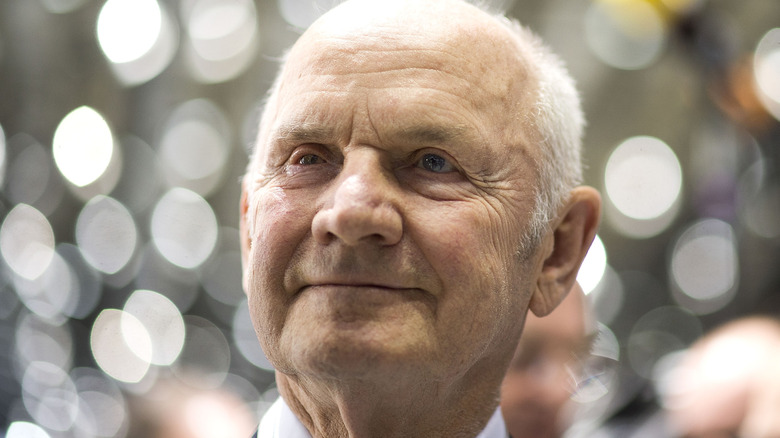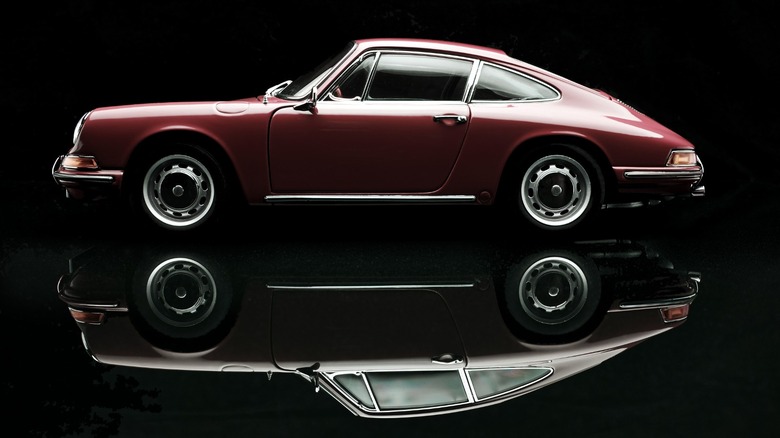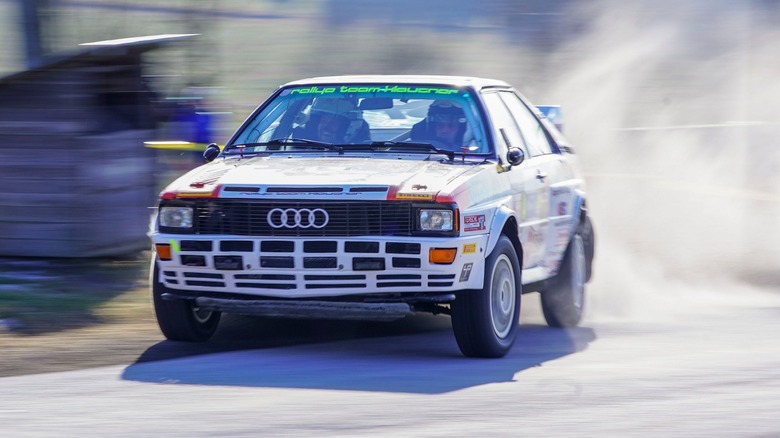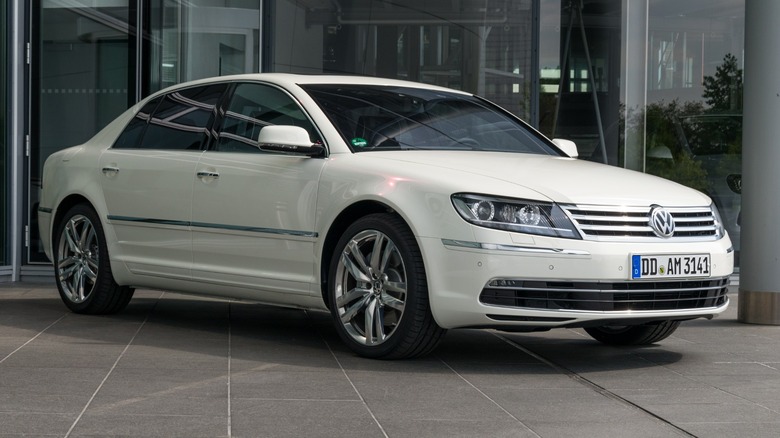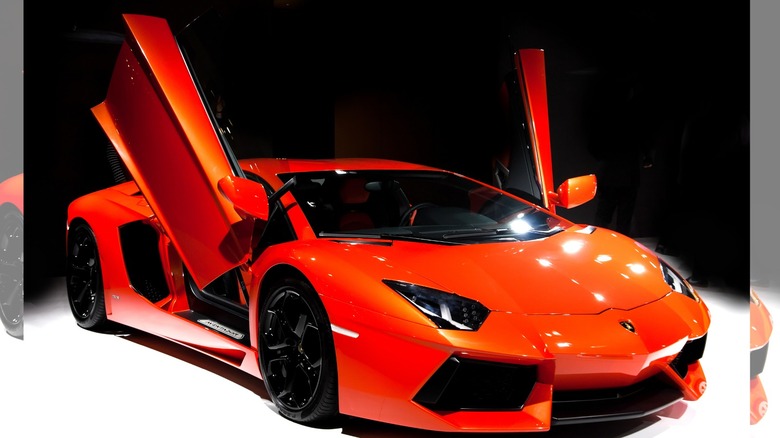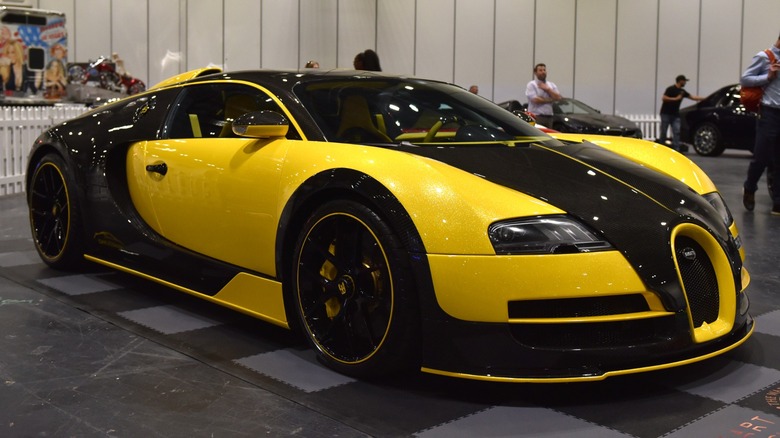Who Was Ferdinand Piëch And What Iconic Cars Did He Build?
Most car enthusiasts know Enzo Ferrari, Ferdinand Porsche, and Ferruccio Lamborghini, some of the most iconic names in the luxury car world. However, another man arguably had just as much impact on modern cars, without as much name recognition.
This man is Ferdinand Piëch, and you most likely know him as the Chairman of Volkswagen Group. However, Piëch was more than just a manager — he was also an accomplished engineer involved in making the first Porsche 911 Carrera, the first five-cylinder Mercedes-Benz OM617 diesel engine, and the fastest (Bugatti Veyron) and thriftiest (Volkswagen XL1) cars of their time. Spending decades engineering these models, Piëch might not have a car manufacturer in his namesake, but he certainly contributed more than his fair share of innovation to the industry. But who exactly was this executive and how did he impact the cars we drive today? Let's take a look into the life of Ferdinand Piëch and explore some of his creations.
Who was Ferdinand Piëch?
Ferdinand Piëch is the grandson of Ferdinand Porsche and the son of Anton Piëch, so he is directly related to two of the three founders of the Porsche company.
Before starting his career in 1963 at Porsche though, he graduated with a mechanical engineering degree from the Zürich Institute of Technology in Switzerland, where his thesis outlined how to create an F1 engine. Using this knowledge at Porsche once he was hired, he convinced the engineers and management working on the Porsche 911 to completely revamp the car's engine a few months before it went into production. He then had to leave the company in 1972 due to some family drama, but was quickly snapped up by Audi as its technical development head for special tasks.
After working decades at the Volkswagen subsidiary, Piëch eventually became the head of the entire VW group. However, he was in for a challenge when he took the reins, as the entire company was on the verge of bankruptcy. Piëch rose to the occasion and, by the time he retired in 2015, not only turned the Volkswagen around but made it into one of the companies that owns many of the top car brands in the world.
Porsche 911
Piëch started working at Porsche just as it was about ready to launch the first Porsche 911. However, when Piëch saw the flat-six engine it was supposed to use, he had to speak up. Remember that Piëch did his thesis on F1 engine development, so he knew a thing or two about engines.
Piëch said that the company needed to race the car if Porsche wanted it to sell, and that the current wet sump oil system in its engine wasn't going to cut it on the racetrack. The young engineer was able to convince the engine developer and Porshe management to pursue his idea, so they rebuilt the engine with the dry sump oil system he had in mind. This definitely helped make Porsche one of the most successful racing car manufacturers in the world. In fact, it still makes some of the most iconic sports cars you can buy today, even after several generations of the Porsche 911.
Audi Ur-Quattro
Audi wasn't the juggernaut it is today when Piëch joined the company in 1972. Although Volkswagen had owned the brand for years at this point, Audi still hadn't made a mark in the German automotive industry, much less the global one. Piëch firmly believed that capitalizing on motorsport was a good way to promote Porsches. One of his team members, Walter Treser, heard about the great handling of the 4x4 Volkswagen Iltis from Jorg Bensinger. The team knew that if they could add more power to the car, Audi could come up with a better competitor. This development eventually led to one of the most iconic rally cars of all time, the Audi Quattro.
The car was eventually renamed the Ur-Quattro, with "Ur" meaning "original" in German, to differentiate it from the quattro all-wheel drive system Audi made for many of its models. Although there were several other people involved in the project, Piëch's bold move of driving the car up a steep mountain pass in winter while using summer tires to wow Volkswagen managers helped cement the Quattro's place in Audi's lineup.
Audi initially planned to only produce 400 Quattros for World Rally Racing homologation rules. But after Piëch's stunt, the company realized the potential that road cars had to develop a new niche for Audi, and the company started selling the Quattro to the general public. Audi then expanded by adding quattro, the all-wheel drive technology, to other Audi models.
Volkswagen Phaeton
The Volkswagen Phaeton isn't the most popular car in Volkswagen's lineup. Once known as Volkswagen's most luxurious car, it was discontinued in Europe in 2016 after a 14-year run. It had an even shorter lifespan in the U.S., where it was on the market between 2004 and 2006. At its peak, VW only sold 11,166 Phaetons in a year, so it wasn't really a volume seller.
However, the Phaeton was one of two cars that Piëch said were some of the best he produced in his career. He made the Phaeton to compete against large cars that BMW and Mercedes were producing at the time. As Piëch once told TopGear, "There are not enough good big cars. And the few one that are there, they earn too much. That's the reason we are stepping in."
It was also around this time that VW acquired Bentley, and the company used the same platform to build the Phaeton and the Bentley Continental. While part-sharing between car models has received a bad rap in the recent years, Piëch's way of doing it is what made most of the Volkswagen Group's models so amazing. Instead of building a good Phaeton and then rebranding it as a bad Continental, he built the platform to the higher brand's standards, and let the high-quality parts and workmanship trickle down to the more affordable brand. This is what he also did with the next iconic car on the list.
Lamborghini Gallardo
The VW Group acquired Lamborghini in 1998, and it was one of the many acquisitions Piëch is credited with that helped successfully turn Volkswagen around. The Lamborghini Murciélago was the first model the brand made after VW took over the reins. However, Lamborghini also wanted to release a more affordable model, which is where the Gallardo comes in.
The Gallardo was first introduced at the Geneva Motor Show in 2003, with the last one rolling off the assembly line in 2013. The Gallardo was a sales success for the car brand, as it sold over 14,000 cars throughout its run. In comparison, a little over 4,000 copies of the Murciélago model were sold.
Piëch's platform sharing strategy paid off in this project as well, as the Audi R8, which launched in 2007, used technology from the Gallardo. This made the R8 such a great sports car that when Audi discontinued it in 2022, all eyes immediately turned to to the R8's replacement even though it is still several years away.
Bugatti Veyron
Most of us would have heard about the Bugatti Veyron. After all, it broke the record for the fastest car in the world in 2005 after achieving 253.8 mph — a record that the McLaren F1 held for over a decade.
However, this project wasn't a testament of Piëch's desire to outpace the F1 or even to become the fastest car maker in the world. After all, if that was his goal, he only needed to go a smidge higher than 243 mph. Instead, the VW boss wanted to beat the Peugeot WM P88. This was a LeMans sports car that defeated the Porsche 917, and it was the last race car he worked on before he leaving the company. The Peugeot beat Porsche for the record of the highest speed on the Mulsanne Straight by hitting 253 mph.
Even after achieving that goal, the Bugatti Veyron did not stop. The company made the Veyron Super Sport five years after released the Veyron. This variant could hit a top speed of 268 mph, making it one of the fastest production cars ever. While other cars have already achieved faster records, it was Ferdinand Piëch and the Veyron that introduced a generation of car enthusiasts to the world of hyper cars.
